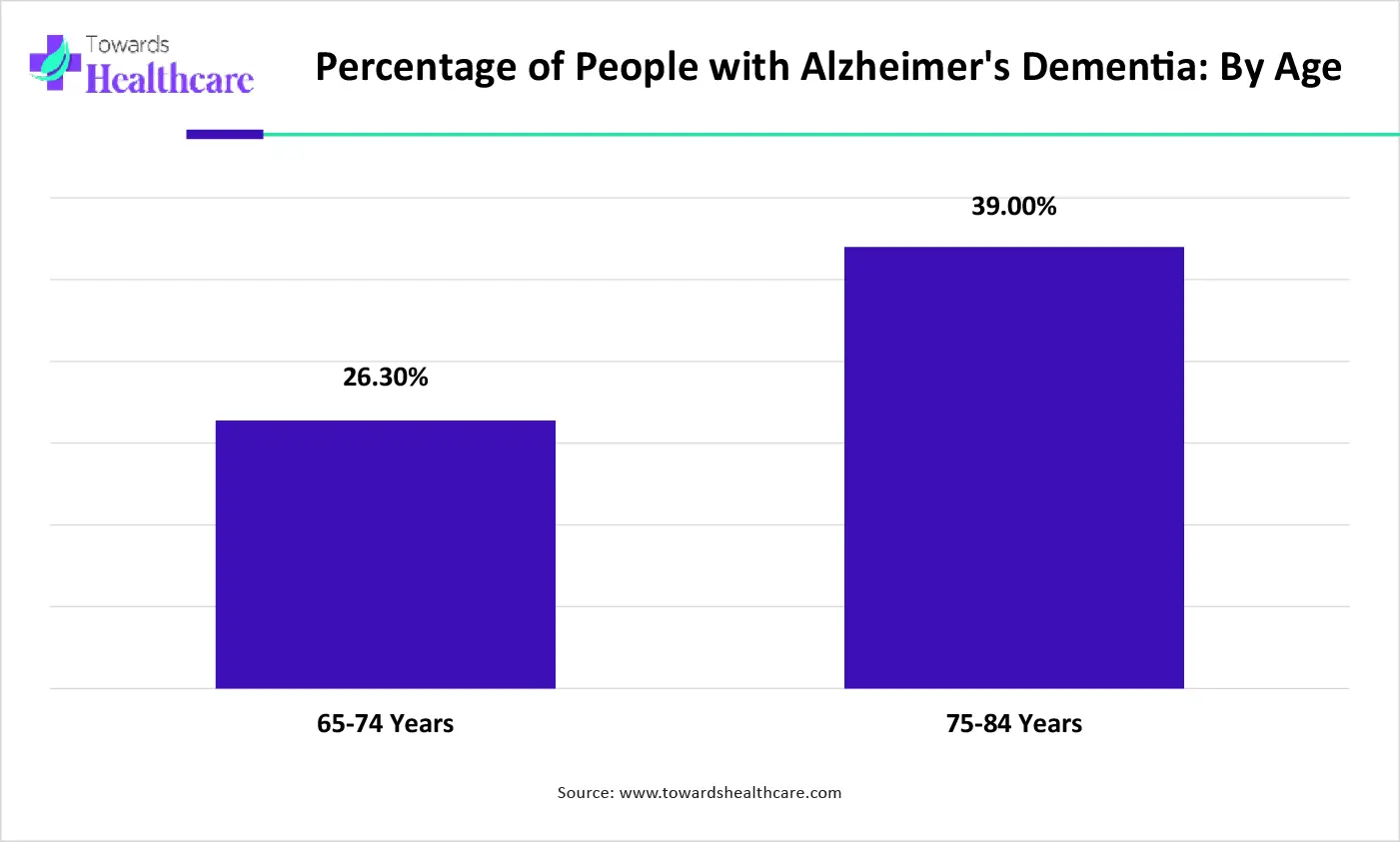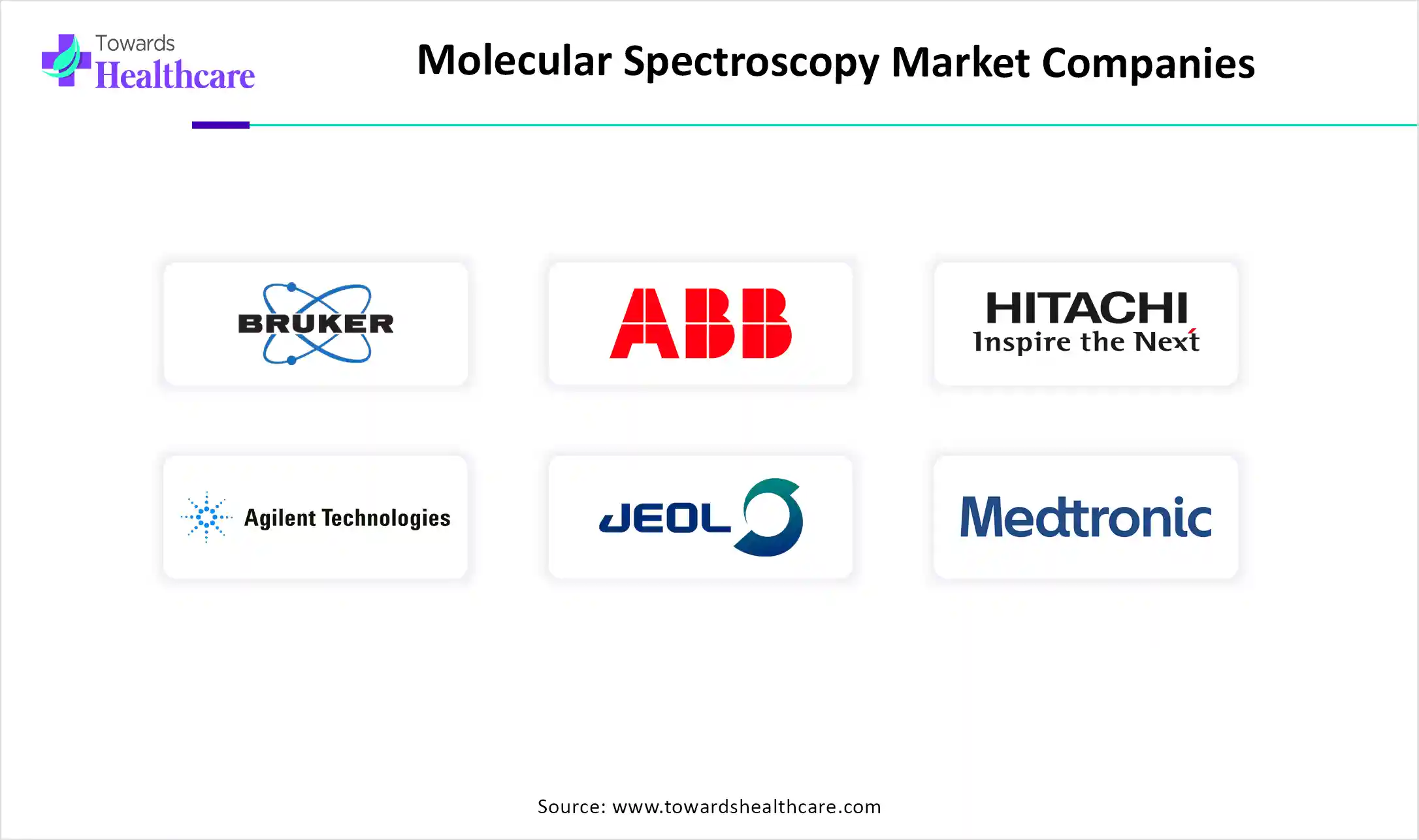November 2025

The global molecular spectroscopy market size is calculated at US$ 6.97 in 2024, grew to US$ 7.15 billion in 2025, and is projected to reach around US$ 9.04 billion by 2034. The market is expanding at a CAGR of 2.64% between 2025 and 2034.
The growing use of molecular spectroscopy in the identification of diseases as well as in the drug development process is increasing. At the same time, various innovations to enhance its performance with the use of AI are also being developed. Hence, these developments are leading to new collaborations between the companies as well as institutes' researchers. Additionally, their use in industries, the healthcare sector, or due to growing research is also being increased. Thus, all these factors are promoting the molecular spectroscopy market growth.

| Metric | Details |
| Market Size in 2025 | USD 7.15 Billion |
| Projected Market Size in 2034 | USD 9.04 Billion |
| CAGR (2025 - 2034) | 2.64% |
| Leading Region | North America |
| Market Segmentation | By Product Type, By Technology, By Application, By Region |
| Top Key Players | Bruker Corporation, ABB Ltd., Hitachi Ltd., Agilent Technologies Inc., JEOL Ltd., Horiba Ltd., Medtronic plc, Merck KGaA, VIAVI Solutions Inc., JASCO Inc., Shimadzu Corporation, PerkinElmer Inc., Thermo Fisher Scientific Inc. |
Molecular spectroscopy plays an important role in the detection of the nature of atoms or molecules. This application is further utilized in the detection of diseases at the molecular or cellular levels. At the same time, its use in the detection of biomarkers in cancer, infectious diseases, or metabolic diseases is also increasing. Similarly, to monitor the chemical reactions or the drug metabolic process, its use is preferred. Moreover, it is also used to understand the electronic, rotational, hyperfine, or vibrational spectra to identify their relation with molecular structure.
New models are being developed with the integration of AI and machine learning (ML) with spectroscopy to enhance the pattern recognition as well as to accurately differentiate the data generated. At the same time, it provides fast and accurate results for the samples collected. Moreover, it monitors the manufacturing process and reduces the risk of errors. Additionally, it also helps in the development of self-calibrated instruments, reducing the need for frequent maintenance. Furthermore, with the use of AI, portable spectroscopy devices are also being developed.
Increasing Applications in Healthcare
The use of molecular spectroscopy in healthcare is rising for various purposes. Its use is increasing in the detection of various diseases, such as infectious diseases, neurological diseases, and cancer, etc. At the same time, it also provides non-invasive techniques, which increases its acceptance rate. Furthermore, its growing use in genetic or metabolic profile detection is also increasing. This, in turn, helps in the development of personalized medications. Moreover, it is also used in the detection of drug metabolism. Thus, all these factors are driving the molecular spectroscopy market.

The graph represents the estimated percentage of people affected by Alzheimer's Dementia depending on age in America in the year of 2025. It indicates that there will be a rise in cases of Alzheimer's Dementia, which is a neurological disease. Hence, it increases the demand for the use of molecular spectroscopy for its early detection. Thus, this in turn will ultimately promote the market growth.
Enhanced Price
The molecular spectroscopy instruments are associated with a high cost, which varies depending on their features. At the same time, it requires high maintenance, as well as the data generated is complex, which in turn increases the need for expertise or trained personnel. Hence, this makes it difficult for various academic institutions as well as startups to afford it. Thus, this limits their use.
Why is Growing Research an Opportunity in the Molecular Spectroscopy Market?
The growing research in industries as well as institutions is increasing the demand for molecular spectroscopy. Its use in the detection of drug metabolism, its structures, as well as its binding properties are increasing. Similarly, it is also used to understand the protein structure or enzymatic activities. At the same time, its real-time analysis along with precision techniques is also increasing its use for research purposes. Thus, the growing research and development is enhancing its use, which in turn, promotes the molecular spectroscopy market growth.
For instance,
By product type, the instruments segment held the dominating share in the market in 2024. The instruments were essential products in conducting molecular spectroscopy. Moreover, it was used in various sectors, which contributed to enhanced applications. Additionally, due to enhanced speed and sensitivity, its use increased, which enhanced the market growth.
By product type, the consumables segment is expected to show a significant growth rate at a notable CAGR during the predicted time. The use of consumables is increasing in the healthcare sector for the detection of various diseases as well as drugs. At the same time, its use in food safety testing is also increasing. Moreover, to avoid contamination, the use of disposable consumables is also growing.
By technology type, the NMR spectroscopy segment led the market in 2024. NMR spectroscopy is mostly used in the drug development process. Furthermore, it was the preferred option as it provided accurate results without destroying or altering the samples. Thus, this contributed to the market growth.
By technology type, the mass spectroscopy segment is expected to show lucrative growth during the upcoming years. The use of mass spectroscopy in the diagnosis of various genetic diseases or metabolic disorders is increasing. At the same time, its use in the development of personalized medication or the detection of impurities in compounds is also increasing.
By application type, the pharmaceutical applications segment held the largest share in the global market in 2024. Molecular spectroscopy was used in various pharmaceutical applications, such as in the testing of purity, metabolism, or stability of the drug, along with the identification of the compound. This promoted the market growth.
By application type, the academic research segment is expected to show significant growth during the forthcoming period. The growing academic research in the field of chemistry, material science, biology, etc., is increasing the use of molecular spectroscopy. These studies are further supported by the funding provided by the government.
North America dominated the molecular spectroscopy market in 2024. North America consisted of well-developed and strong industries, along with the presence of advanced technologies as well as skilled personnel. This, in turn, increased the development of new treatment and diagnostic approaches, which increased the use of molecular spectroscopy. This contributed to the market growth.
The healthcare infrastructure in the U.S. is well-developed, which in turn is increasing the use of molecular spectroscopy in hospitals as well as in industries and academia. At the same time, following the rules and regulations laid by regulatory bodies promotes their safe use. Thus, their use in food and drug testing is increasing.
The industries as well as institutes in Canada are continuously using molecular spectroscopy for various purposes. Moreover, new developments are also being made in these technologies with the use of AI to enhance their application and performance. This, in turn, is increasing the collaboration among the companies.
Asia Pacific is expected to host the fastest-growing molecular spectroscopy market during the forecast period. The healthcare sector in Asia Pacific is expanding, due to which it is adopting various technologies, instruments, as well as new treatment and diagnostic options are also being developed. This is increasing the use of molecular spectroscopy, enhancing the market growth.
The healthcare sector in China is utilizing advanced technologies, which in turn, is increasing the innovation conducted in molecular spectroscopy. At the same time, a variety of personalized treatment options are also being developed, which is increasing the use of molecular spectroscopy for its purity, metabolism, as well as stability testing.
The growing incidence of disease in India is increasing the use of molecular spectroscopy for its early detection. Moreover, the advancing industries are also using it in the development of new treatment approaches. At the same time, growing research is also increasing its use, which is supported by the funding provided by the government.
Europe is expected to grow significantly in the molecular spectroscopy market during the forecast period. Europe consists of well-developed industries as well as academic institutions that utilize molecular spectroscopy for research and development purposes. Furthermore, due to its growing application in other sectors as well is promoting the market growth.
The use of molecular spectroscopy in Germany is growing in various pharmaceutical as well as biotechnology industries. At the same time, its use in materials science as well as in food safety testing is also increasing. Moreover, its use is encouraged by the regulatory bodies as well as the government.
The growing interest in research conducted in various industries as well as institutes in the UK is growing. This, in turn, is increasing the use of molecular spectroscopy in the development of innovative diagnostics or treatment approaches. Therefore, the number of collaborations has also increased. Moreover, their use in the clinics and hospitals is also growing.

By Product Type
By Technology
By Application
By Region
November 2025
November 2025
November 2025
November 2025